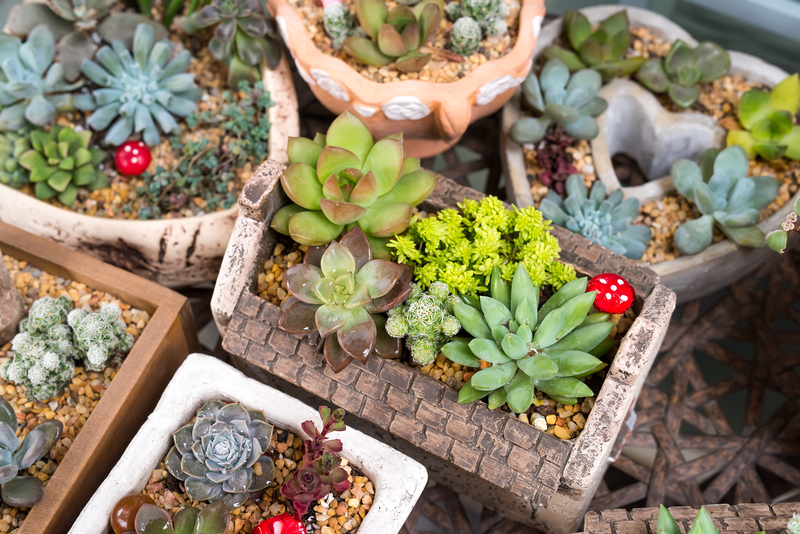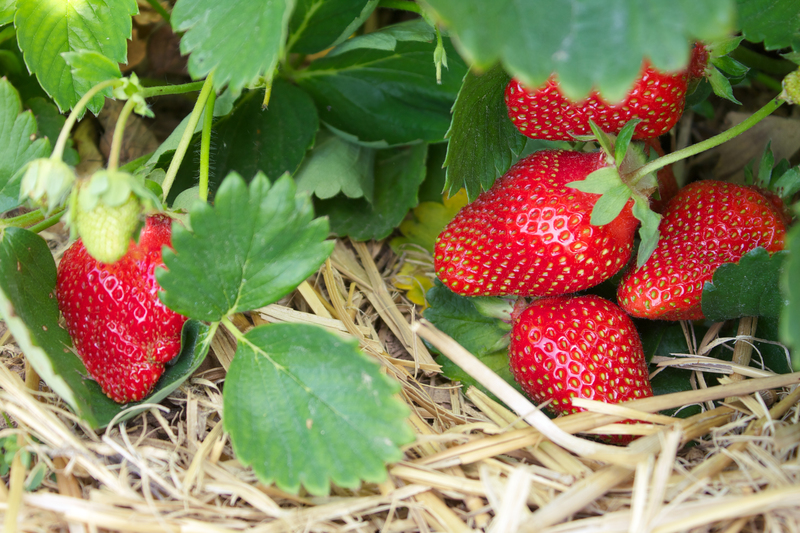How to Cultivate a Garden Kids Will Love
Posted on 16/08/2025
How to Cultivate a Garden Kids Will Love: A Comprehensive Guide
Creating a vibrant and engaging garden that kids will adore is not only a rewarding way to foster their love for nature but also an exceptional method to encourage physical activity, curiosity, and creativity. Cultivating a garden that children will love involves more than planting flowers and vegetables; it's about crafting a sensory-rich, interactive, and safe environment that sparks their imagination. In this detailed guide, we'll explore how to build a kid-friendly garden full of learning opportunities, fun, and natural beauty.
Why Create a Children's Garden?
Before digging into the steps for designing a child-friendly garden, it's essential to understand why such a space can be beneficial for your kids. Gardening is a hands-on educational tool, teaching responsibility, patience, and environmental awareness. Additionally, it provides a natural setting for sensory development and encourages outdoor play, which benefits children's overall health and well-being.
- Develops fine motor skills through digging, planting, and watering.
- Improves attention span by involving kids in long-term projects.
- Promotes healthy eating habits by growing fruits and veggies.
- Enhances sensory exploration via textures, colors, scents, and sounds.
- Fosters teamwork and bonding when working together as a family.

Planning Your Kids' Dream Garden
Involve Kids from the Start
The key to cultivating a garden children will truly love is involving them in every stage. Let them participate in the brainstorming, planning, and even in shopping for plants and tools. Their input can make the garden more meaningful and ensure it matches their interests.
Choosing the Right Location
Select an area that is visible, easily accessible, and safe for children to explore. The chosen spot should receive adequate sunlight--most edible plants require at least 6 hours a day--and be protected from hazards such as sharp tools, thorny plants, and water features.
Design a Playful Layout
- Create paths: Use stepping stones or mulch trails for kids to wander and play.
- Zones: Designate different areas for digging, planting, sensory exploration, and quiet relaxation.
- Mix plant heights: Layer low, medium, and tall plants for interest and to create secret spaces.
Safety First!
Keep safety as your top priority. Ensure garden tools are age-appropriate and store them securely. Avoid toxic plants, spiky shrubs, or small items that pose a choking hazard. Fencing the area or using raised beds can also help define boundaries and keep kids within sight.
Selecting Kid-Friendly Plants
Selecting suitable plants is crucial for a child-centered garden. Opt for low-maintenance, hardy varieties that are safe to touch and taste. Focus on bright colors, interesting textures, and delightful scents to engage all five senses.
Top Plants for a Kids' Garden
- Sunflowers: Quick to grow and towering--kids love to watch them stretch skywards.
- Sugar snap peas: Edible and fun to pick; they thrive in cooler months and grow quickly.
- Nasturtiums: Colorful, edible flowers that attract pollinators.
- Mint: Tough, aromatic, and great for sensory exploration (just keep it contained as it spreads easily).
- Strawberries: Simple to grow in pots or beds; kids adore hunting for ripe berries.
- Pumpkins: For planting in spring and harvesting by fall--perfect for crafts and cooking.
- Lamb's ear: Its fuzzy leaves invite soft touch.
- Cherry tomatoes: Tiny, sweet, and easily popped into little mouths.
Plants to Carefully Avoid
- Foxglove, Oleander, and Datura: Highly toxic if ingested.
- Rhododendron and Azalea: Beautiful but poisonous.
- Plants with thorns or sharp leaves: Such as roses, certain cacti, and some agaves.
Incorporate Fun and Educational Features
Building Sensory Gardens
Sensory gardens are designed to stimulate children's senses through color, texture, sound, scent, and taste. Here's how to cultivate a children's sensory garden:
- Touch: Include lamb's ear, moss, and smooth stones.
- Sight: Plant brightly colored flowers in contrasting groups.
- Scent: Use aromatic herbs like lavender and basil.
- Sound: Add ornamental grasses that rustle or install wind chimes.
- Taste: Grow edible produce like cherry tomatoes and snap peas.
Add Miniature Spaces for Adventure
- Fairy gardens: Use small found objects, miniature furniture, and tiny figurines.
- Hidden nooks: Drape bean teepees or tall sunflowers to form secret hideouts.
- Dinosaur digs or bug hotels: Encourage exploration and learning about nature's smallest creatures.
Water Features that Mesmerize
Nothing captivates children like water. Small, shallow fountains, birdbaths, or bubbling stones can attract birds and butterflies. Always supervise and ensure these features are safe and shallow enough to prevent accidents.
Garden Art and Exploratory Zones
- Painted rocks for color and creativity.
- Stepping stones with handprints or mosaics.
- Natural musical instruments like xylophones made from bamboo.
Easy Projects to Get Kids Gardening
Seed Starting
Invite children to plant seeds in small pots or egg cartons on a sunny windowsill. Watch together as seedlings sprout and track their growth with a simple chart.
Painting Plant Markers
Transform popsicle sticks or smooth stones into colorful labels. This blends art with gardening and helps children remember what's planted where.
DIY Bird Feeders and Bee Hotels
- Pinecone bird feeders rolled in vegetable fat and seeds.
- Simple bee hotels made from bamboo tubes for solitary bees.
Composting Together
Closing the loop on food waste, build a small compost bin or pile and let your children toss in kitchen scraps, leaves, and grass clippings. Watch the magic of decomposition together and use finished compost to nourish your garden.
Tips for a Thriving Kids' Garden Year-Round
Keep Maintenance Simple
Remember to let the garden be a place of discovery, not a chore. Choose flowers and vegetables that are easy to grow and can handle a little neglect. Mulch beds well to suppress weeds and conserve moisture, and set up rain barrels for easy watering.
Rotate Roles: Make Gardening Fun, Not Work
- Let kids choose crop varieties each year.
- Switch up planting, weeding, watering, and harvesting to keep things interesting.
- Celebrate successes and share the harvest in snacks, meals, or crafts.
Garden Through the Seasons
- In spring, sow seeds like peas, radishes, and carrots.
- In summer, plant sunflowers, pumpkins, and tomatoes, and enjoy picnics outdoors.
- In autumn, gather leaves for crafts and plant bulbs for next spring.
- In winter, plan the garden together and start seeds indoors.

Encouraging Lifelong Love for Gardening
Making gardening a cherished family tradition can instill a lifelong passion for the outdoors in your children. Here's how to keep the interest blooming:
- Create a garden journal for kids to draw, write about, and photograph their gardening journey.
- Read garden-themed books together to inspire dreams for the next planting.
- Visit local botanical gardens or community gardens for new ideas.
- Share garden successes online or at a community event.
Conclusion: Your Guide to a Magical Kids' Garden
Cultivating a garden kids will love is about creating an inviting, flexible, and inspiring space where nature becomes their classroom and playground. By incorporating imaginative features, easy-care plants, and interactive activities, you'll nurture not just a beautiful garden but also your child's appreciation for nature and sustainability. Whether you have sprawling yards or tiny balconies, any garden can be transformed into a haven for kids--all it takes is creativity, a bit of guidance, and lots of enthusiasm.
Start planning your kids' dream garden today and grow memories that will last forever!

